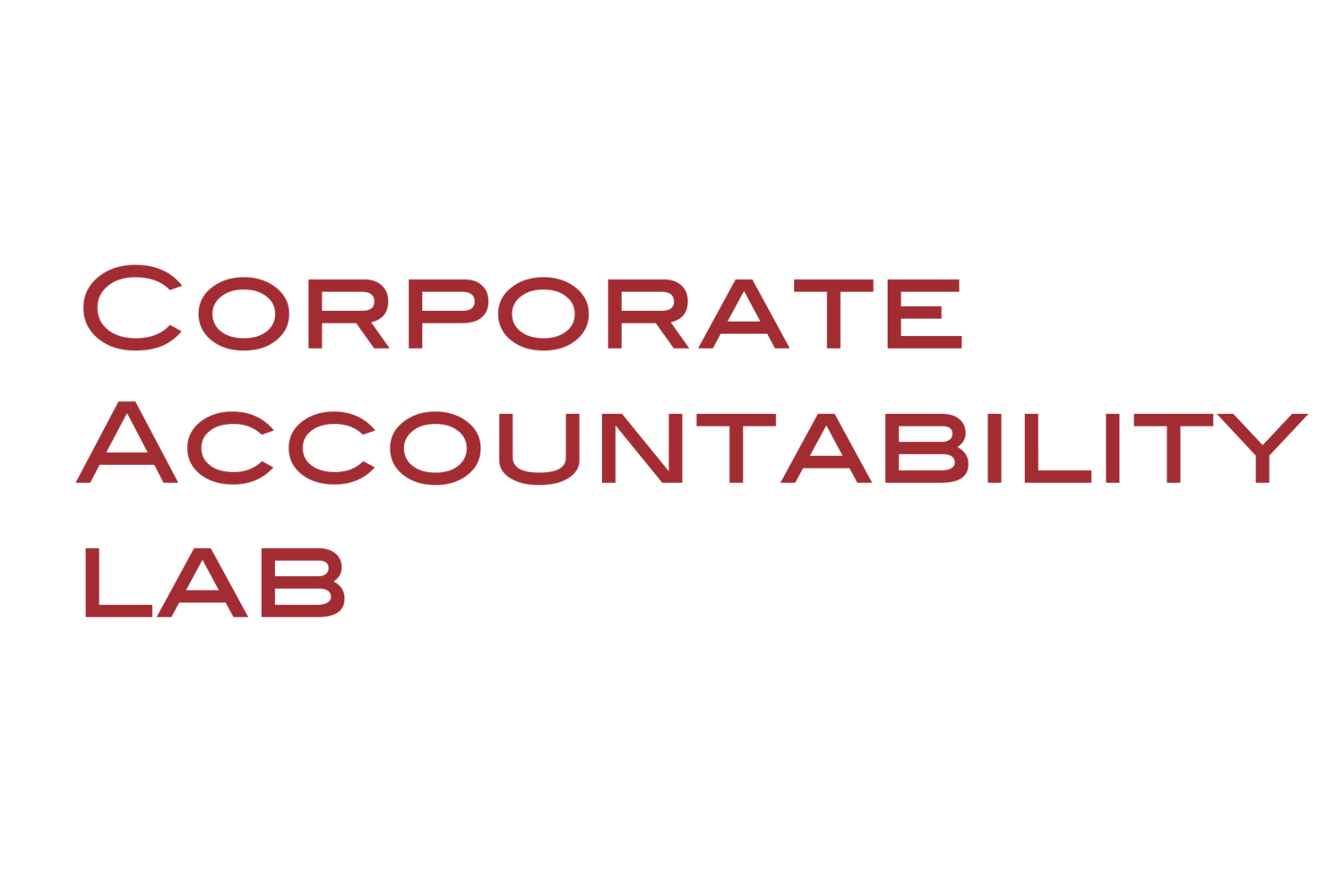It’s Nearly Impossible To Buy Chocolate You Can Feel Good About
A lot of you have been asking for our recommendations on what chocolate to buy this Halloween, given the fact that forced labor and environmental abuse are so rampant in the cocoa sector. We wish we had better news.
The sad and hard truth is that there is very little chocolate that is truly sourced ethically (and don’t get me started on the labor and environmental issues related to sugar and palm oil production, both key ingredients in Halloween candy).
While children in the United States are dressing up and asking strangers for candy, how can you make sure that the candy your kids are being given – or that you are handing out – wasn’t produced using forced or child labor? The honest answer is that you probably can’t.
Child labor is simply too embedded in the cocoa industry. It is currently so much a part of how cocoa is sourced that we, as consumers, cannot buy our way out of this problem. While I wish it were as easy as buying a Fairtrade or certified chocolate bar, that is unfortunately not the solution. The scary reality is that forced and child labor are so systemic in chocolate supply chains that it’s almost impossible to avoid as a consumer -- even in certified chocolate bars (see below).
This issue is going to require more than label shopping. We need broader, systemic change; companies must pay cocoa farmers a fair and living wage so that farmers can support their families and pay adult workers fair wages. (And if you want to support systemic change in this sector, like pushing for a higher cocoa price and better bargaining power for farmers, consider contributing to CAL!)
This blog post gives a brief overview of the human rights and environmental abuse that is standard in most chocolate supply chains, especially in West Africa, and how the world’s largest chocolate brands perpetuate this norm by paying too little for the cocoa they source. It also explains some of the misconceptions consumers may have about certification schemes. And it calls on the public to make their voices heard fighting labor abuses in the cocoa sector.
Where is my chocolate from?
About 60% of cocoa, the basis for chocolate, is sourced from West Africa, mainly from Cote d’Ivoire and Ghana. Cocoa farmers in these countries generally earn poverty-level wages. While companies make massive profits off of chocolate sales (in 2018 Barry Callebaut made $288 million in profits), cocoa farmers are not even close to earning a living income. One estimate puts cocoa farmers’ actual income at around $0.78, while the living income in rural Cote d’Ivoire is $2.51 per day -- meaning that cocoa farmers earn only about 30% of the living income. Despite their large profits, companies have refused to pay enough for cocoa beans, leaving cocoa farmers unable to support their families.
Because of this poverty-level income, labor conditions on these farms is often similar to indentured servitude. Farmers often work to pay off their debts from the previous year, as they and their laborers fail to earn enough to live on. This poverty is a primary reason that child labor – as well as child trafficking – is endemic in the cocoa industry. Cocoa farmers simply don’t earn enough money to pay adult workers a fair wage.
It has been estimated that there are over 2 million children working on cocoa farms in West Africa. While some of these kids work on their families’ farms (either during non-school hours or, often, instead of attending school), many others are trafficked from Mali and Burkina Faso to work as laborers on these farms. These children, who are generally between the ages of ten and fifteen, often perform labor that is inappropriate and dangerous. Children cut cocoa pods using machetes, spray pesticides, and carry loads that are much too heavy for their growing bodies. This type of work, often referred to as the worst forms of child labor, is prohibited under international law.
Cocoa farms are also partly responsible for the large-scale deforestation of Cote d’Ivoire and Ghana. In Cote d’Ivoire, cocoa farmers illegally grow cocoa in national parks, leading large swathes of forest to be cleared and rapidly destroying the biodiversity and animal life. 90% of Cote d’Ivoire’s forests have been lost since 1960. The cocoa grown in these now-cleared national parks is sold to multinational cocoa companies and ends up in your Halloween candy.
Can’t I just buy certified chocolate?
People often look for certification labels on chocolate, believing that these provide proof that the supply chain is clean. Certification standards, such as Rainforest Alliance/UTZ (which merged in 2018) and Fairtrade, certify cocoa farms. This means they provide standards for labor practices, environmental protection, and good practices that farmers are supposed to follow. In return for following these labor practices, farmers earn a slightly higher price on their beans, although the price depends on the certification program. Certified farms are prohibited from using child labor, may not be on land located in protected forests, and must follow a long list of standards. But while these certification programs often look good on paper, the reality can be quite different. Moreover, they tend to give consumers a misleading impression that farmers work under fair and decent conditions.
There is evidence that certification programs often have little, if any, impact. Certification programs have certainly failed to lift farmers out of poverty or achieve significant industry-wide improvements. While some studies have shown that certification can slightly improve a farmer’s income, a recent Washington Post article reported that another study actually found more incidences (16%) of child labor on UTZ certified farms than on uncertified farms (14%). This mirrors what CAL saw on cocoa farms; the labor conditions were almost identical on certified and uncertified farms. Another major study on cocoa and tea by Genevieve LeBaron at the University of Sheffield found that “[e]thical certification schemes are largely ineffective in combating labour exploitation and forced labour.” When pressed, certification schemes claim that they don’t “guarantee” that their standards are being met – instead these schemes focus on farmers making improvements over time. However, these “improvements” are often merely checked boxes that have little to do with the reality on the farms.
The certification system is often only a reality on paper. Farmers often don’t know whether their farms are certified or not. One study found that 95% of cocoa workers don’t know whether their farms or the farms where they are employed were certified or not. Even when farms are certified, farmers often don’t know what they are required to do to be certified. Farmers have reported selling both certified and uncertified beans and that the “labour standards for all beans were the same,” demonstrating that for cocoa farmers certification has little positive impact.
While certification standards -- UTZ/Rainforest and Fairtrade -- emphasize monitoring, there is little actual monitoring of certified farms and the monitoring that is done is generally inadequate. Farmers often sell their cocoa to coops, groups that then sell the cocoa to the next buyer in the supply chain. These coops often do some of the monitoring, a clear conflict of interest since the coops make more money selling “certified” cocoa. When outside inspections do occur, farmers are often given advance notice -- making it unlikely that these inspectors would find blatant violations, such as children doing dangerous activities on the farm.
Isn’t Fairtrade chocolate, well, fair?
Fairtrade has many of the same problems associated with other certification schemes. As explained above, farmers don’t necessarily know that their farms are certified, and monitoring on these farms can be sporadic and haphazard. One study found that the Fairtrade premiums paid to farmers were not enough for farmers to pay for the higher costs of production associated with certification (that is, when farmers were aware that their farms were certified). These premiums are certainly not enough to lift workers out of the deep poverty endemic in the cocoa sector.
Fairtrade does function a little differently from certification systems like UTZ/Rainforest Alliance. Like other certification schemes, Fairtrade pays premiums. Additionally, Fairtrade has established a minimum price for cocoa (which is higher than the farmgate price, meaning the price set by Cote d’Ivoire and Ghana) and in theory should ensure that farmers earn a decent wage. However, until the price of cocoa crashed in 2016–17, Fairtrade had never activated its price floor (which had been set at $2,000 per ton). This was true despite the fact that cocoa farmers have been living in poverty for years.
Recently, Fairtrade raised its minimum price to $2,400 and increased its premiums from $200 to $240. While this is a good first step, it is still not enough. While certified -- including Fairtrade -- chocolate may be better than uncertified, it is still not providing the decent living conditions for cocoa farmers that consumers believe it to be.
So what can consumers actually do?
While the situation may appear hopeless, it’s not! First, CAL is currently working to use the law to improve conditions. So please support us! Second, you can use your leverage as a consumer and advocate to make an impact!
While we need big systemic change and can’t buy our way out of the problem, there are still steps that consumers can take to bring about real change. You can write to your elected officials and to the big chocolate producers – Nestlé, Hershey’s, Mars, Cargill, Barry Callebaut, Ferrero, and others. Tell your elected officials to pass real and meaningful laws that will force companies to be transparent about their supply chains. And tell multinational companies that you don’t want to eat chocolate sourced from cocoa harvested by children and families that live on poverty wages. Tell them to live up to their many promises and plans, and to pay cocoa farmers a higher wage. Tell them to care about the people at the bottom of the supply chain, doing the hardest and most crucial work.
Allie Brudney is a Justice Catalyst Legal Fellow at Corporate Accountability Lab.


